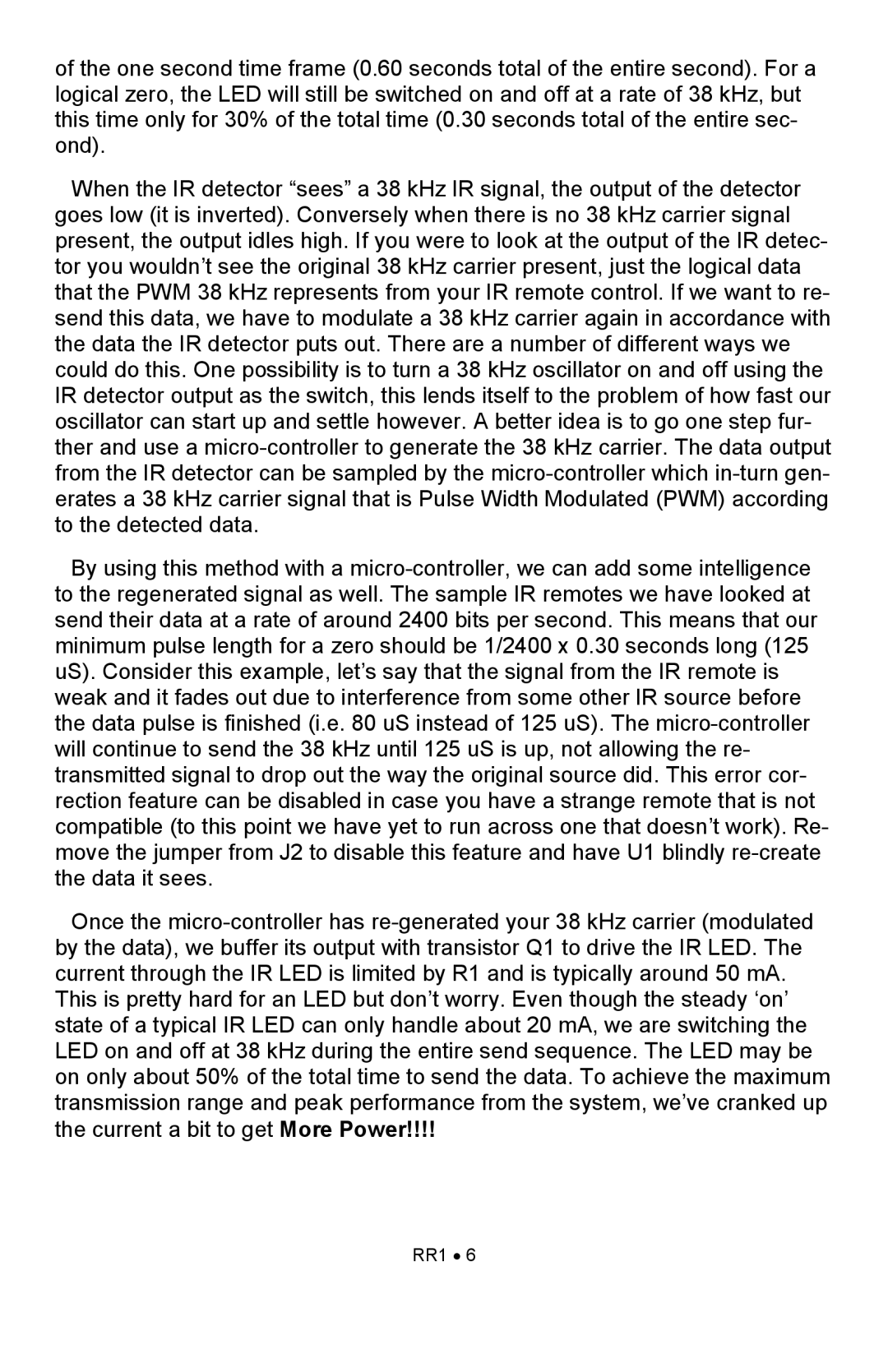of the one second time frame (0.60 seconds total of the entire second). For a logical zero, the LED will still be switched on and off at a rate of 38 kHz, but this time only for 30% of the total time (0.30 seconds total of the entire sec- ond).
When the IR detector “sees” a 38 kHz IR signal, the output of the detector goes low (it is inverted). Conversely when there is no 38 kHz carrier signal present, the output idles high. If you were to look at the output of the IR detec- tor you wouldn’t see the original 38 kHz carrier present, just the logical data that the PWM 38 kHz represents from your IR remote control. If we want to re- send this data, we have to modulate a 38 kHz carrier again in accordance with the data the IR detector puts out. There are a number of different ways we could do this. One possibility is to turn a 38 kHz oscillator on and off using the IR detector output as the switch, this lends itself to the problem of how fast our oscillator can start up and settle however. A better idea is to go one step fur- ther and use a
By using this method with a
Once the
This is pretty hard for an LED but don’t worry. Even though the steady ‘on’ state of a typical IR LED can only handle about 20 mA, we are switching the LED on and off at 38 kHz during the entire send sequence. The LED may be on only about 50% of the total time to send the data. To achieve the maximum transmission range and peak performance from the system, we’ve cranked up the current a bit to get More Power!!!!
